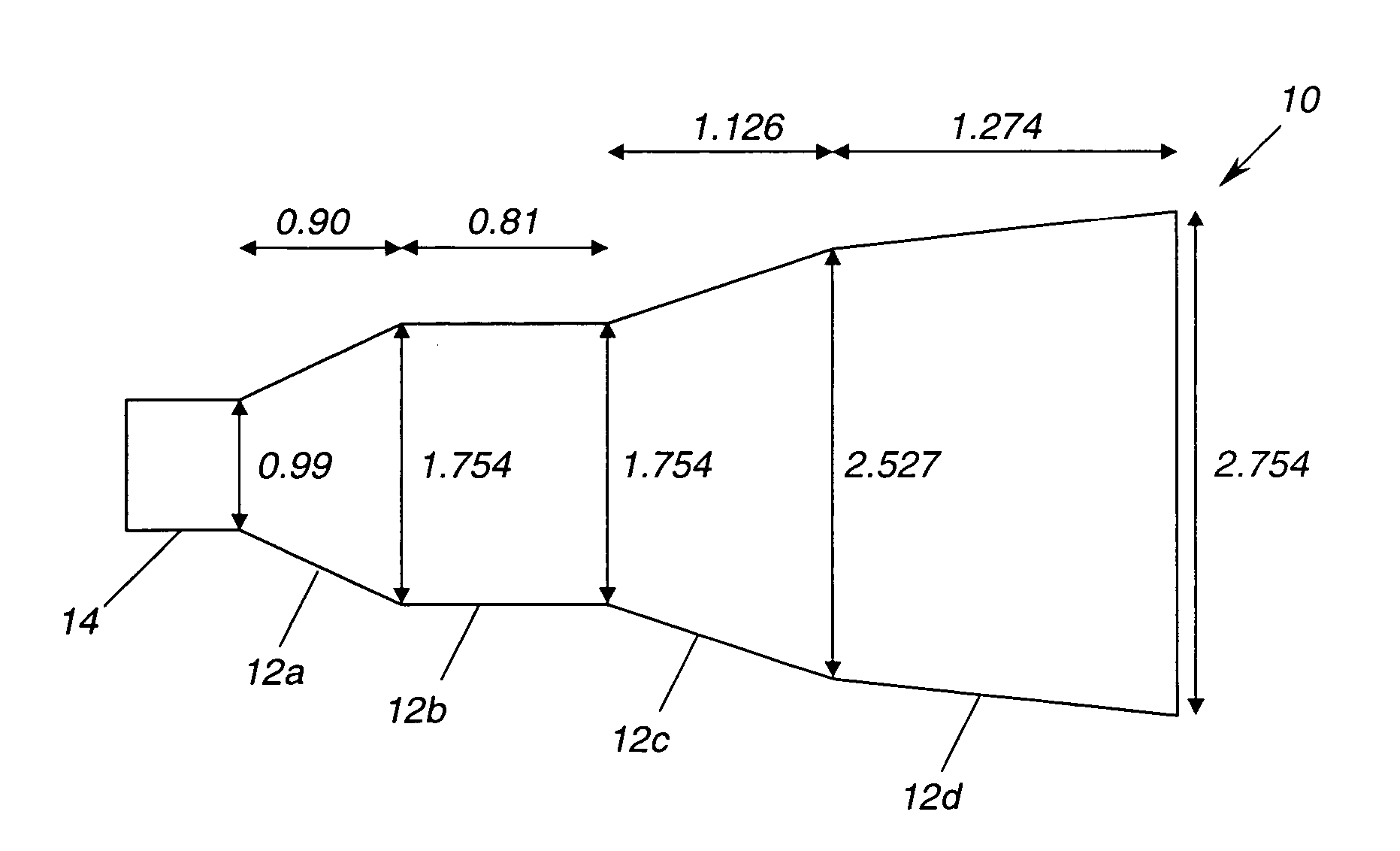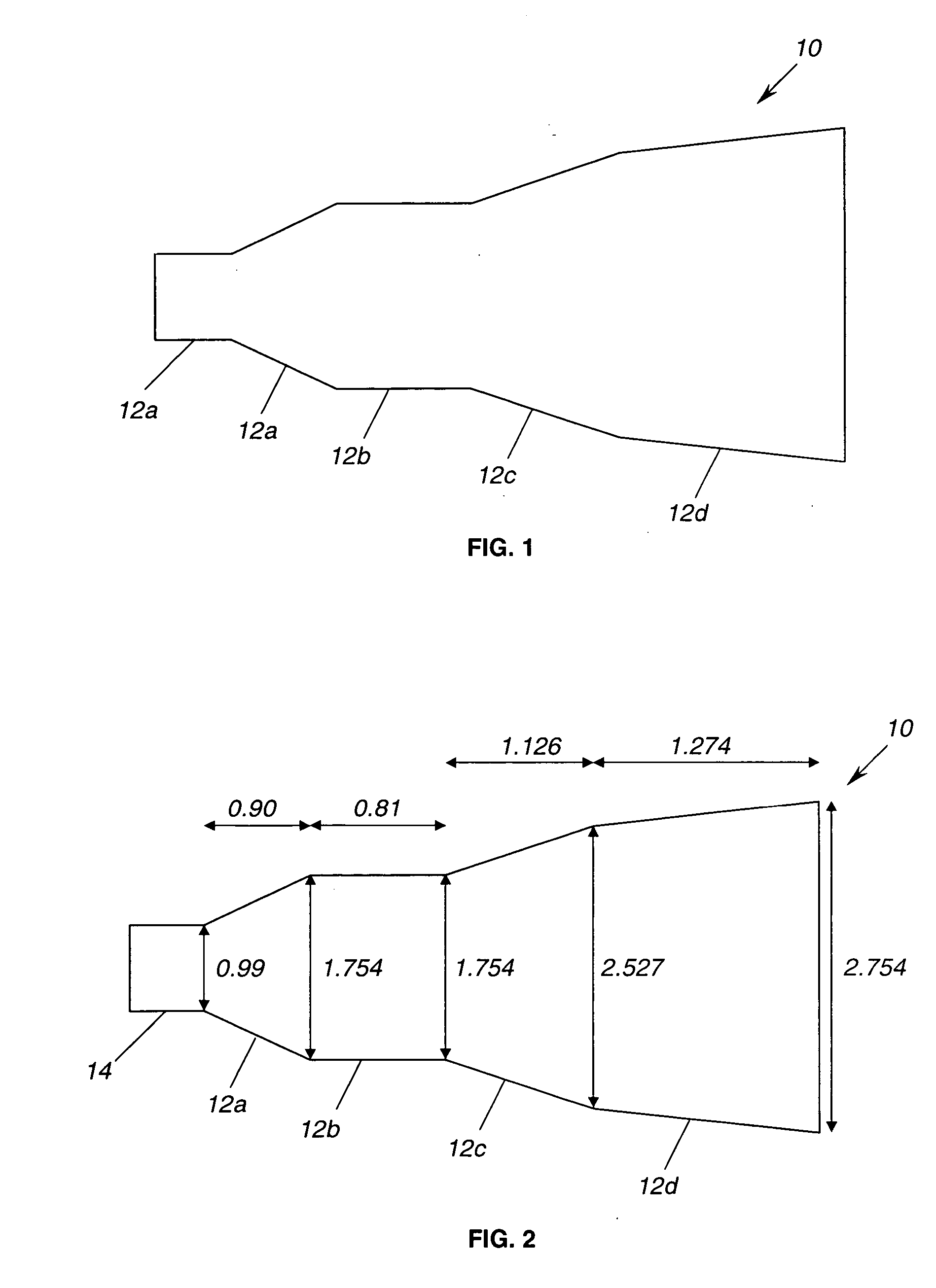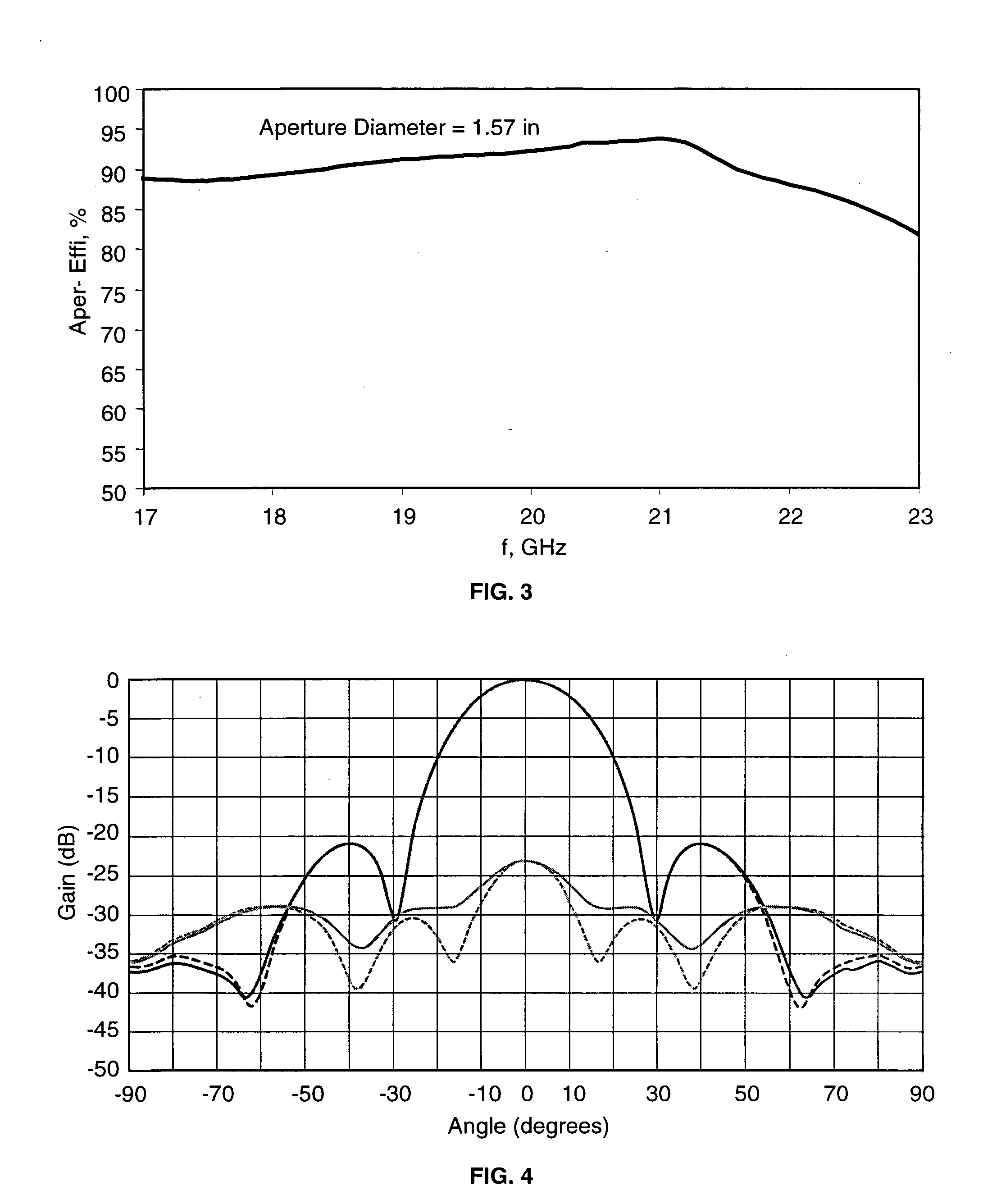Multiple flared antenna horn with enhanced aperture efficiency
a technology of aperture efficiency and antenna horn, which is applied in the direction of antennas, electrical equipment, etc., can solve the problems of significant cost savings, circuit modules constitute the most expensive parts of phased array systems, and not a practical approach in the design of antenna array, so as to facilitate the manufacture of antenna horns
- Summary
- Abstract
- Description
- Claims
- Application Information
AI Technical Summary
Benefits of technology
Problems solved by technology
Method used
Image
Examples
Embodiment Construction
[0014] As shown in the drawings for purposes of illustration, the present invention is concerned with antenna horns and with techniques for improving the efficiency of antenna horns. The gain of an antenna is given by the expression: G=4π η Aλ2,
where G is the antenna gain, η is the aperture efficiency, A is the physical area of the aperture, and λ is the wavelength. Thus the antenna gain is directly proportional to the aperture efficiency.
[0015] In many applications, but particularly in the case of phased array antennas, it is highly desirable to provide an elemental antenna with an aperture efficiency as high as possible, because doing so increases the elemental gain and reduces the number of elements needed to form an array with a required overall gain. The present invention provides a new approach to improving the aperture efficiency of an antenna horn.
[0016] In accordance with the invention, an antenna horn includes multiple flared sections with flare angles and lengths...
PUM
 Login to View More
Login to View More Abstract
Description
Claims
Application Information
 Login to View More
Login to View More - R&D
- Intellectual Property
- Life Sciences
- Materials
- Tech Scout
- Unparalleled Data Quality
- Higher Quality Content
- 60% Fewer Hallucinations
Browse by: Latest US Patents, China's latest patents, Technical Efficacy Thesaurus, Application Domain, Technology Topic, Popular Technical Reports.
© 2025 PatSnap. All rights reserved.Legal|Privacy policy|Modern Slavery Act Transparency Statement|Sitemap|About US| Contact US: help@patsnap.com



